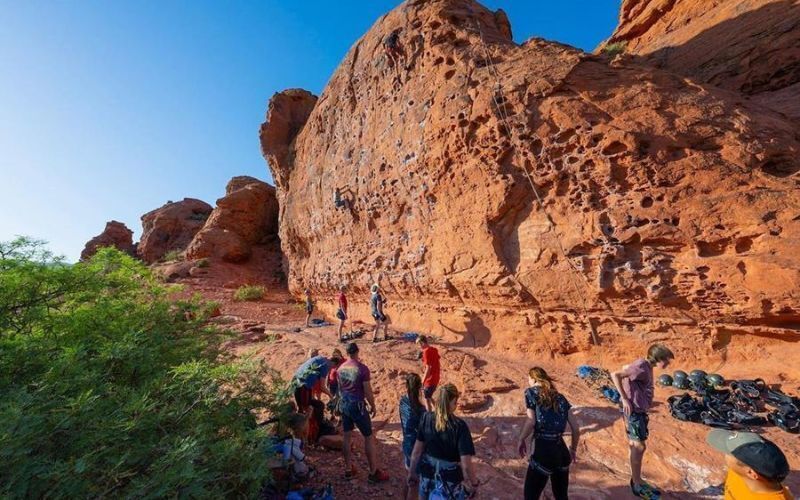A rock climbing practice session for high school students organized by Get Outside in St. George, UT.
It doesn’t have to be rock climbing or mountain biking—get outdoors and awed by nature—a walk in the park, sitting down by a stream, looking up at a tree.
When Matthew Mizukawa was 16, his family moved from a suburb of Washington DC to a small city in Utah called St. George. Like most kids moving to a new town, his biggest anxiety was making friends. “I was fortunate that I got caught up with a group of guys who took me under their wing. As soon as I moved there, they invited me to join them mountain biking, hiking, and rock climbing,” he says. “I found my community in the outdoors.”
It sparked a lifelong love for being in nature. “It quite literally changed my life,” he adds. As he became a parent, he and his wife tried to get their children excited about the outdoors as well. But more and more of their children’s time was spent watching TV or playing video games.
“By 2010, the average screen time among teens was 7 hours. By 2015, it had jumped to 9 hours.” he says. “I did more research and it shouldn’t surprise anyone that all evidence showed that it had negative effects on their physical and mental health. So, my wife and I decided to do something about it.”
They started a nonprofit called Get Outside in 2019 in St. George, UT, to help high school students do activities like mountain biking, climbing, hiking, skiing, wakeboarding, and kayaking. It works as a club, where students recruit and mentor each other with the support of a teacher, and experienced community members volunteer to teach the skills novices need. One goal is to help bridge technical and financial barriers that inhibit many kids from engaging in outdoor sports.
He hopes that the natural world can be a key place for more kids to build community, like it did for him when he was a teenager. As part of the group’s programming, club members go through leadership training. Inclusion is a core value. “You sometimes see kids from minorities or low-income backgrounds who might feel isolated, who might feel that they don’t fit in. We take a lot of effort to teach the leaders in these clubs to make everyone feel welcomed.”
Sandy Ferrell helped bring the Get Outdoor club to her school when she was a principal. “One of the things that I learned from the outdoors is that it is an equalizer for kids, because when you are there, it doesn’t matter as much what car you drive or what clothes you wear. I really believe that it is a place where you can build inclusion, which hopefully spills back into the high school.”
Source: The Weavers

